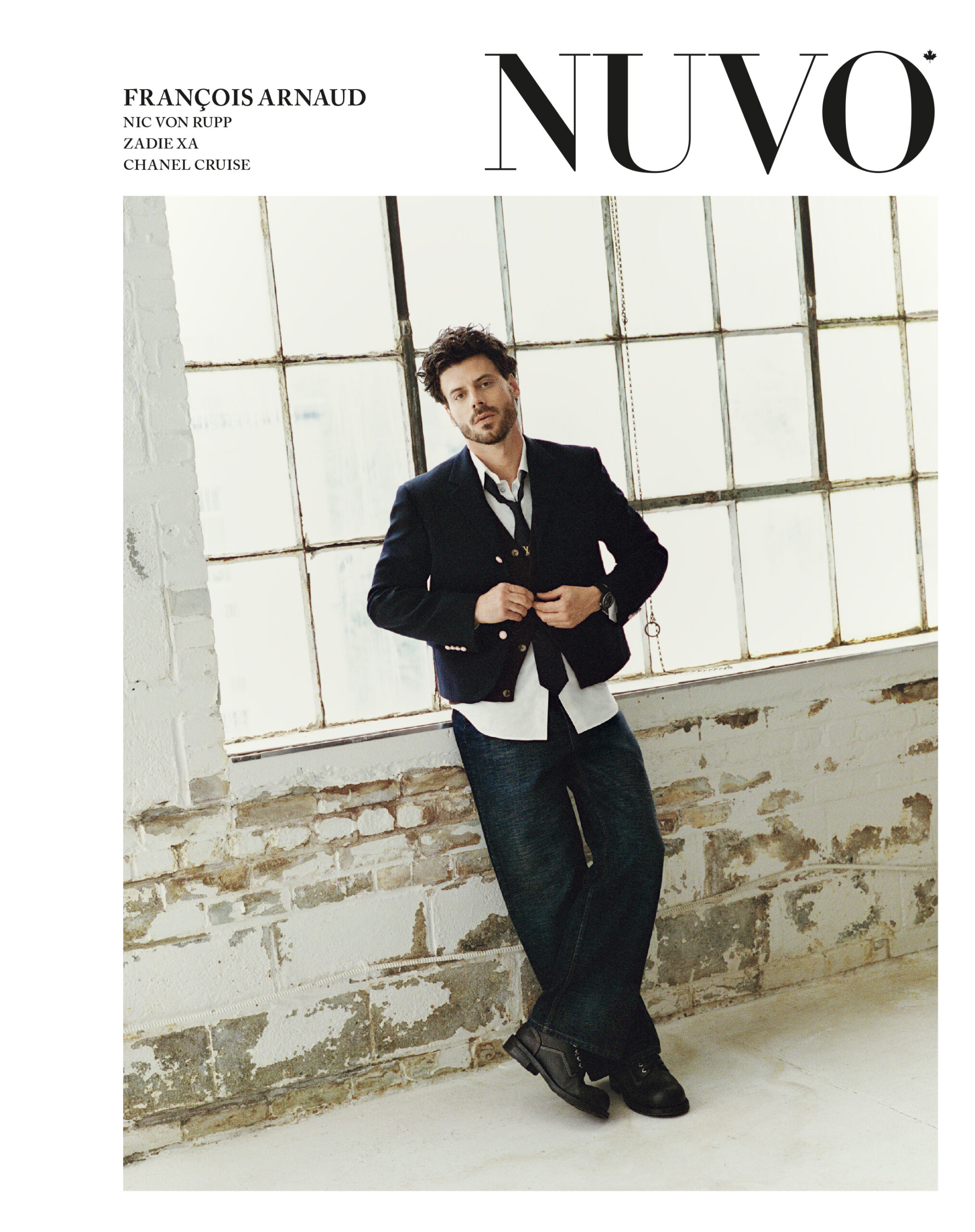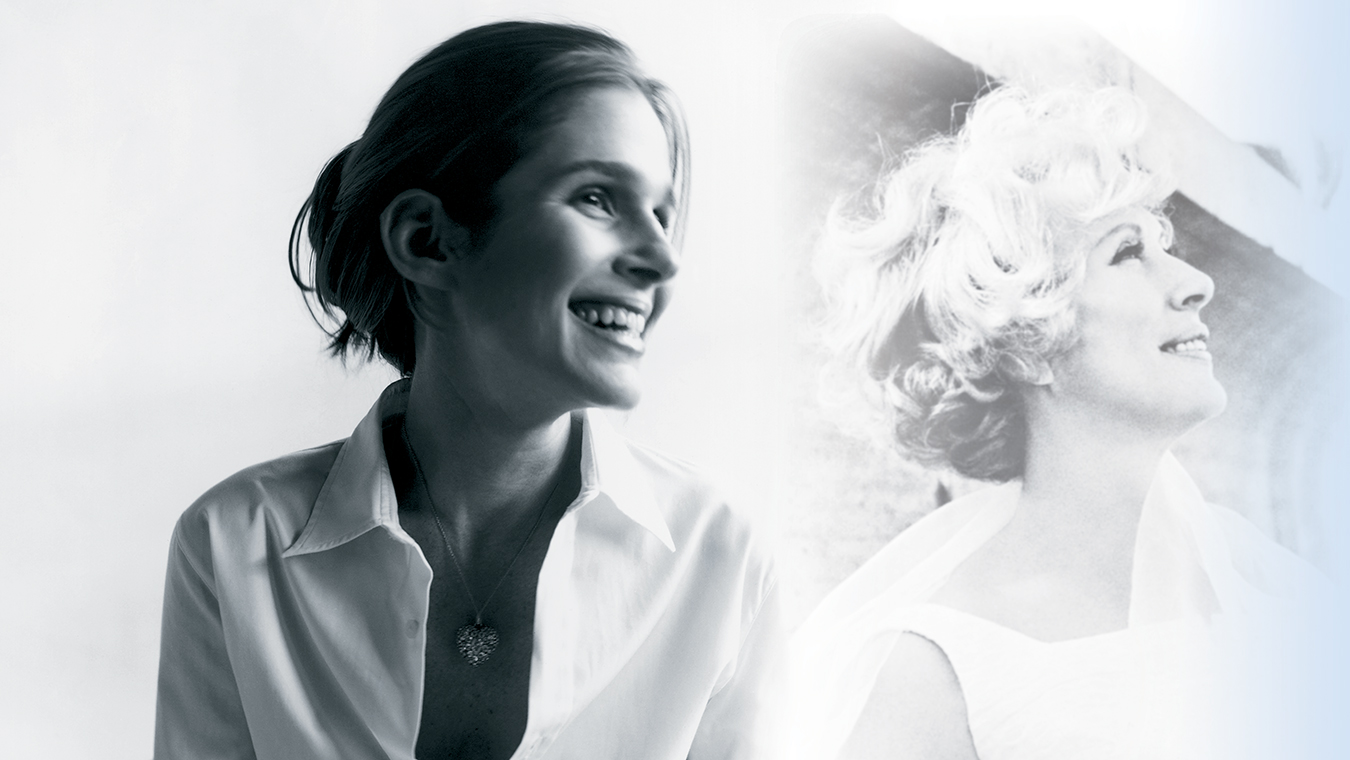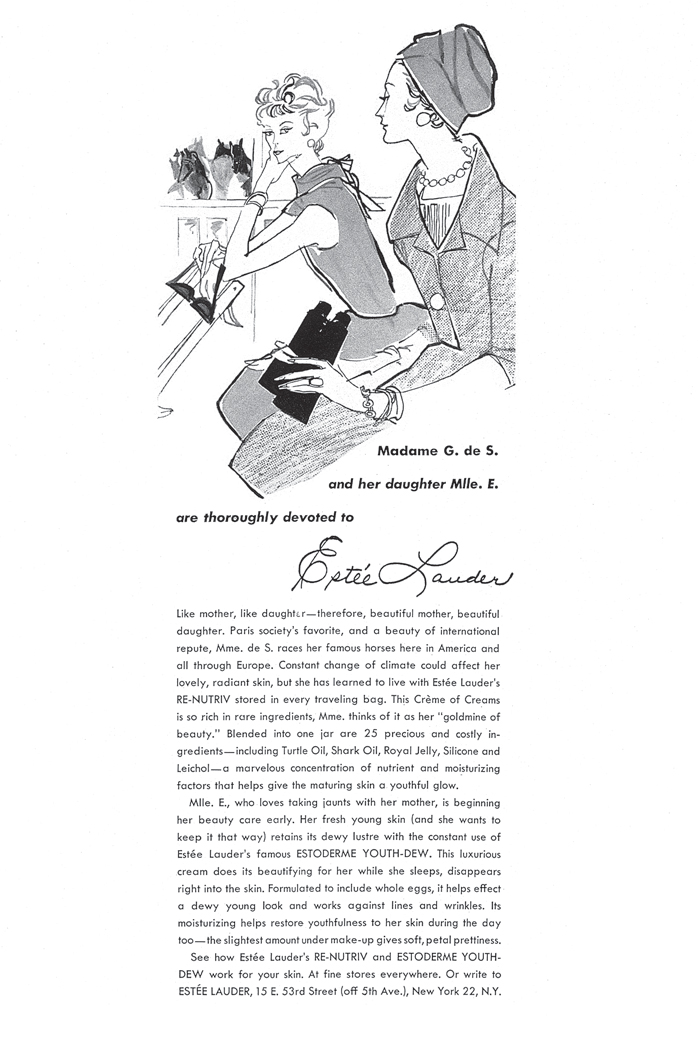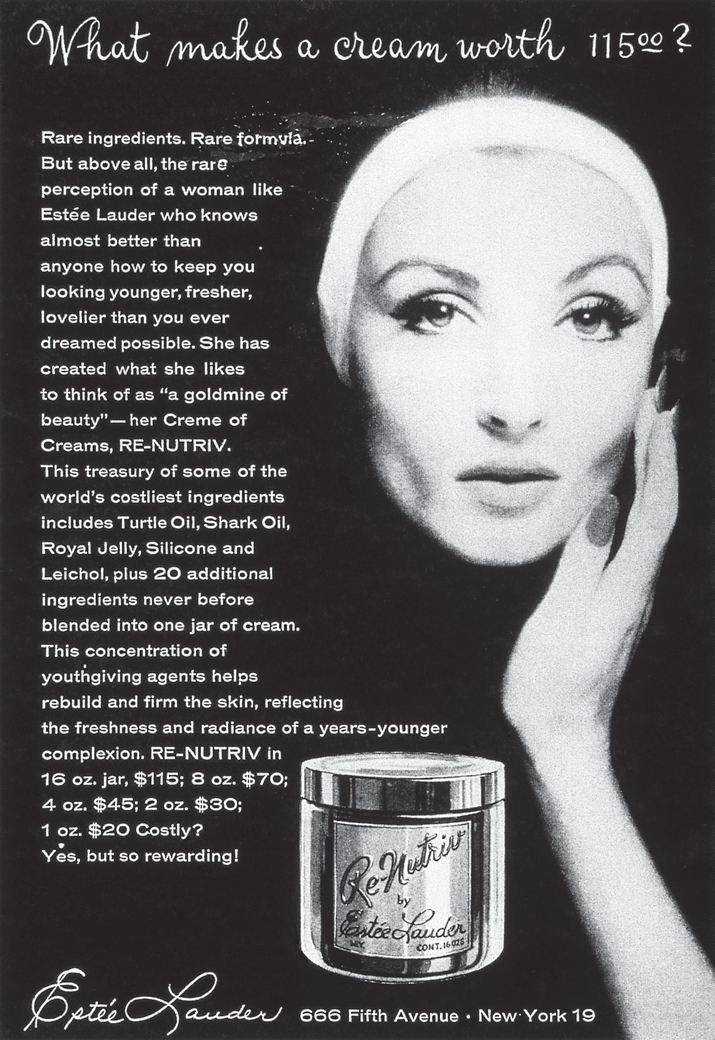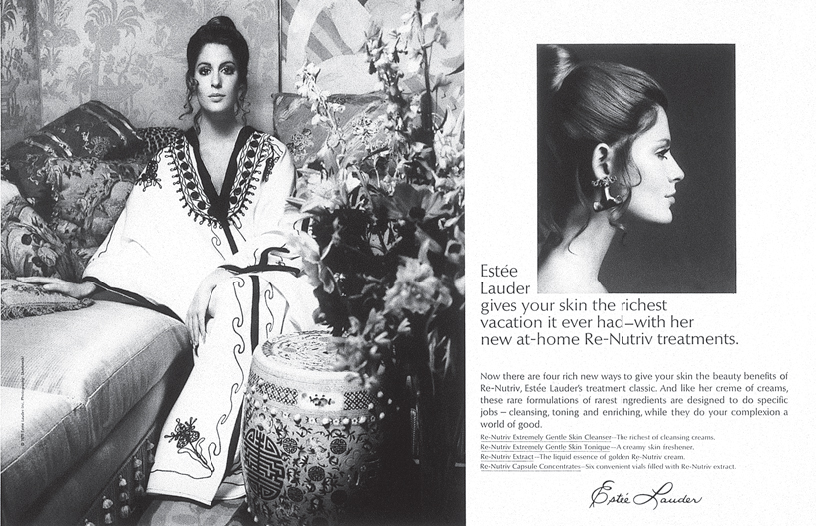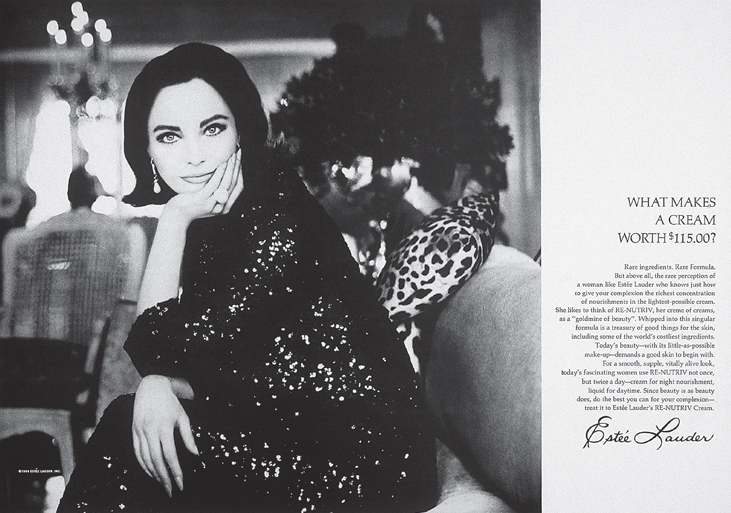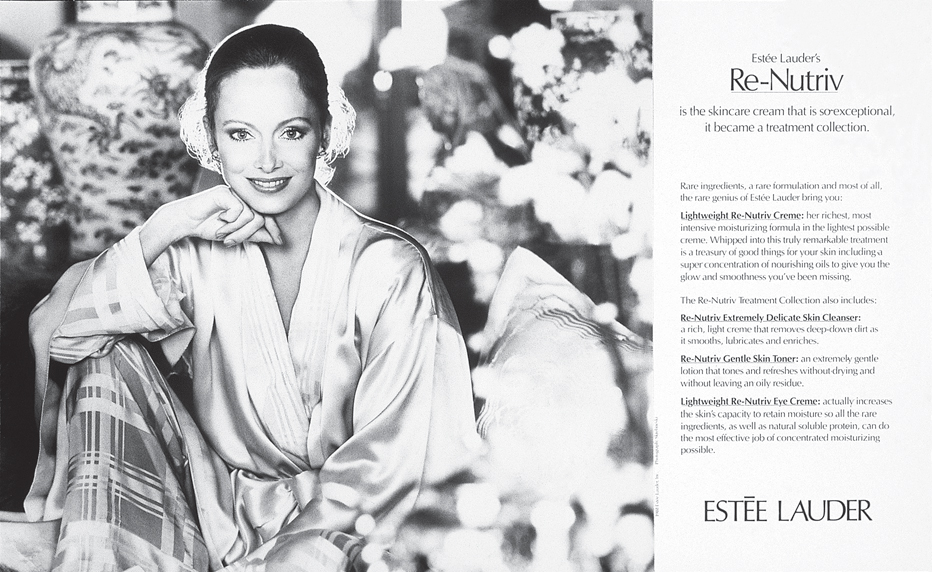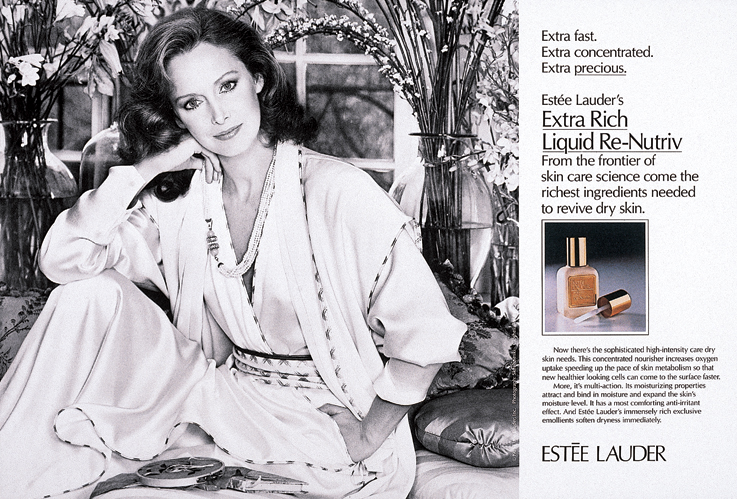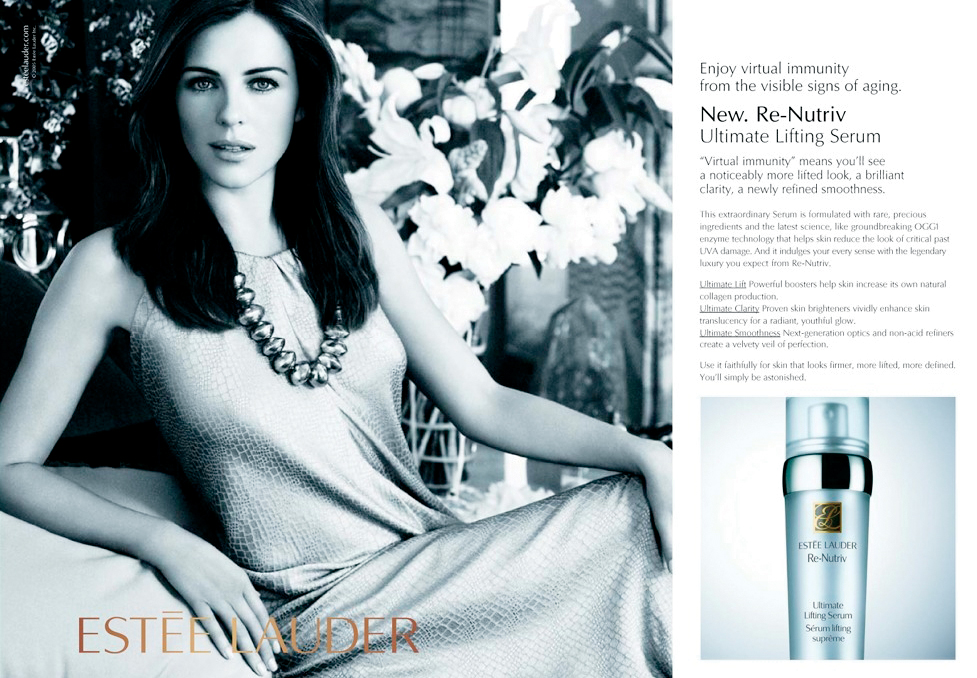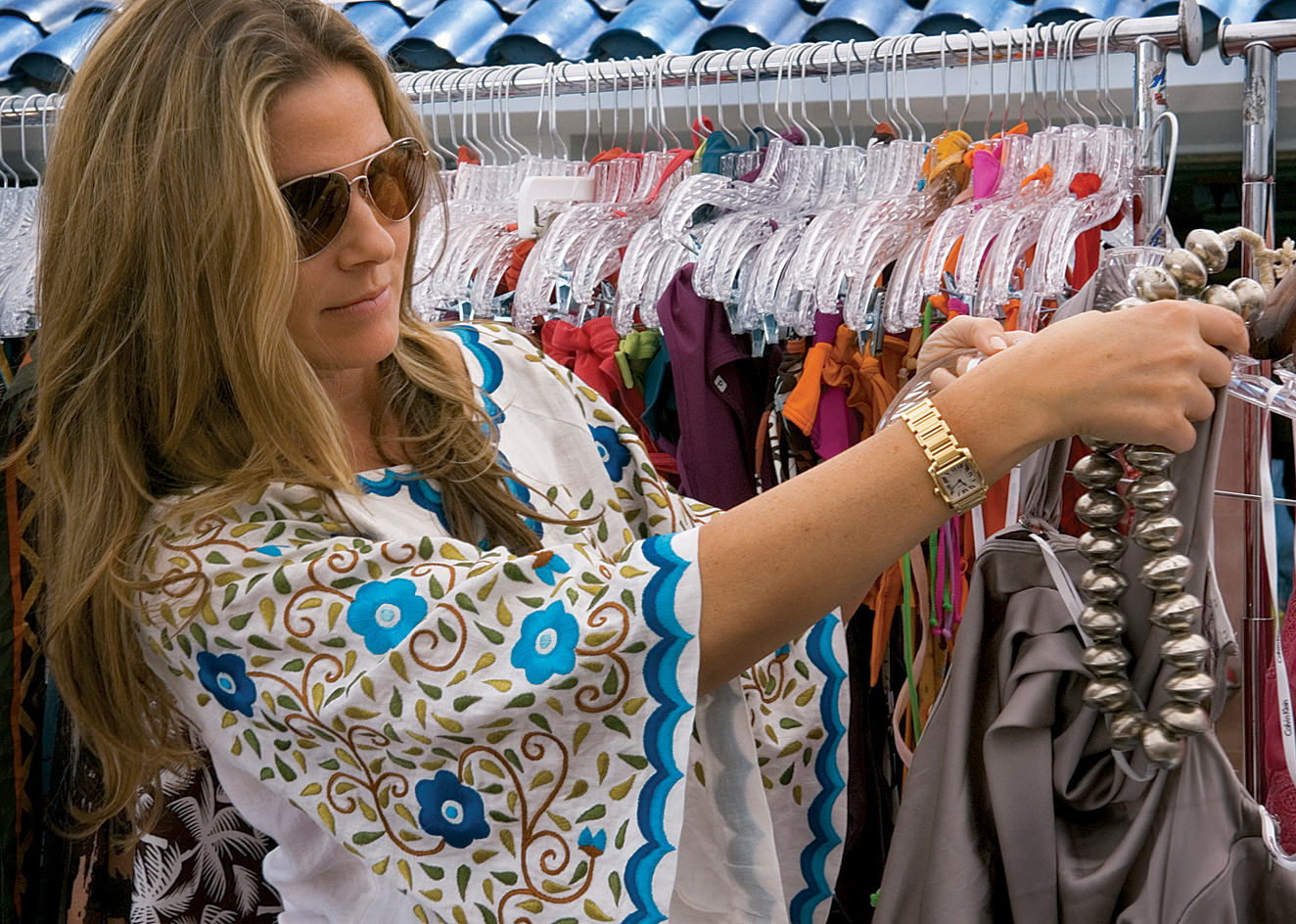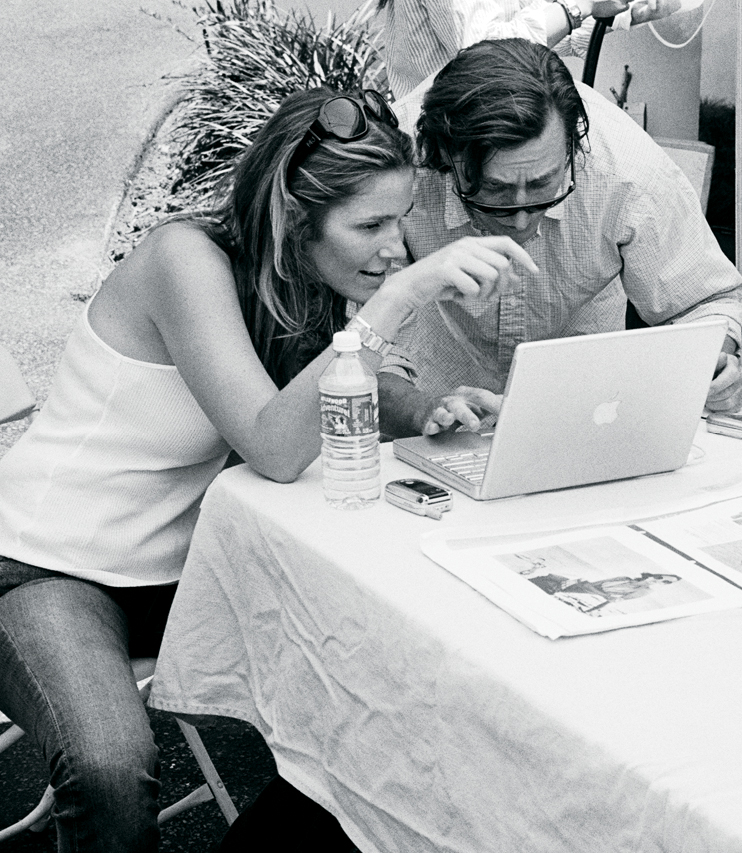“Everything you see here, I’ve touched,” Aerin Lauder says, motioning to advertisements plastered on poster board, scattered in piles and hung on the walls of her pristine office, “whether it’s an ad, or packaging, or colour selection.” Carolyn Murphy and Liya Kebede sit together in one; Murphy models a pair of sunglasses and a gold bikini in another. These are just a few key representations of the lifestyle that Estée Lauder has created. It is a brand that Aerin Lauder, as Creative Director and Vice President of Global Advertising, masterminds from all angles. Her warm brown eyes, soft features and distinct jawline reveal her as a member of the Lauder clan, America’s royal family. She embodies the grace and wisdom of her grandmother Estée, and her hands-on approach is that of her family. But a streak of rebellion is evident. She is clearly creating a new path and taking the company into uncharted territory.
It’s February in New York City, and Fashion Week has hit the streets. As the tents break to renovate for the next show, high above Central Park on Fifth Avenue, Aerin Lauder takes pause from a busy show schedule to reflect on her part in the family business, and how she perceives working beside, and firmly within, the fashion world. “People say you never forget to put your clothes on in the morning,” she begins. “Well, you don’t forget to take care of your skin, or put on your make-up either. There’s always a correlation between fashion and beauty.” She has embraced being part of the fashion community and is always seen sitting front row during Fashion Week. This particular break in her day follows the showing of Michael Kors’ Fall/Winter 2006 Collection and Lauder is impressed with the richness it brought to the table. “He’s a good friend,” she says. “He does beautiful work.”
Her involvement in the fashion community is not just a result of her own personal passion, but a part of the heritage of her family’s company: “Fashion is very important to us. We were founded in 1946 by a woman who loved fashion, who loved style. It’s part of our soul.” That woman is Aerin’s grandmother Estée Lauder. That soul is palpable the moment Aerin speaks about the company. She is prepared to talk about the business and even about the fashion trends revealed just moments before at the Kors show. She speaks from her gut and from her heart, and speaks of nothing but a very intimate and deep connection to her work. The company was founded by Estée and her husband Joseph Lauder and now, with each successive generation, is passed along through the family tree. Aerin’s father, Ronald S. Lauder, is chairman of Clinique Laboratories and the youngest son of Estée. Her cousin William became President and Chief Executive Officer in 2004, her sister is Vice President of BeautyBank, a new brand targeting teens with a more approachable price range, and her uncle Leonard was previously President of the company.
Holding 26 brands worldwide, the Estée Lauder Companies Inc. has created a legacy, and in some sense a dynasty, in the cosmetic industry. The company began with its namesake brand, Estée Lauder, and started Clinique in 1968. Prescriptives, a “colour authority with an advanced collection of highly individualized skin products”, was founded in 1979. Origins followed in 1990 as a brand that addresses the natural ingredient market. Over the past decade the company began to find its place as a big player in the cosmetics industry and collected enough power and clout to begin acquiring companies under the Estée Lauder branding machine. M.A.C, Bobbi Brown, La Mer, Stila, Aveda, Bumble and bumble, Rodan + Fields, are just a few of their main acquisitions.
The way Aerin Lauder integrated into the company, head-first, has contributed to her current approach: hands on and involved in every step of the way.
However great the numbers are, or how healthy the financial reports stand, it is the appreciation of the heart and soul of the company that has Aerin Lauder spearheading Estée Lauder into the 21st century. She has been there to introduce the brand’s first black model, a new alliance with a fashion legend, and a re-launch of old favourites into the modern market. Aerin has moved Estée Lauder forward and created the idea of a brand that represents a complete lifestyle, not unlike the one her grandmother, and now she herself, represents. But Aerin has a new perspective. Her philosophy combines classic elegance with a modern edge and she sees her role as moving the company forward with a reverence for heritage, but an eye on the future.
When Aerin graduated in communications from the University of Pennsylvania, she already had an inkling that she would be working in fashion or beauty. Considering her surroundings, it may have been a given, though her family never pushed the industry on her. In 1992, she joined the marketing team at Prescriptives. Aerin began to learn the family business hands on. “I like to call it my mini-business school,” she says. The way she was integrated into the company, head-first, has contributed to her current approach: hands on and involved every step of the way. She takes responsibility for all the decisions from development to marketing and is a key motivator for the company’s current direction. And she has an informed view of the past to guide her.
“I watched the company evolve. Watched them make some good decisions and some bad decisions, like any company does,” Aerin says. She continues, smiling: “We are really happy with where we are now.” Grossing $5.79 billion in sales in 2004, it’s not surprising they’re satisfied. They have been able to market each brand as unique sections of the consumer demands: natural ingredients, fragrance-free, make-up studio and artist, the list goes on.
Branding for any company is an important quality that allows the consumer to identify with the product on a number of levels, be they visual or sensual. Aerin Lauder pioneered the idea of a complete lifestyle under the brand, a way for the consumer to identify with the product on an all-encompassing level. “The Estée Lauder woman” is a term that was formulated first by Estée herself. She is a woman of certain grace, wisdom and beauty. Phyllis Connors and Karen Harris were the first models to represent that woman. In 1995, Aerin brought in Elizabeth Hurley and the ads began to transform the Estée Lauder woman into a complete lifestyle. “The Estée Lauder woman is busy, perhaps a mom, always busy doing things,” Aerin explains. This image of, well, a superwoman is something that connects with women today.
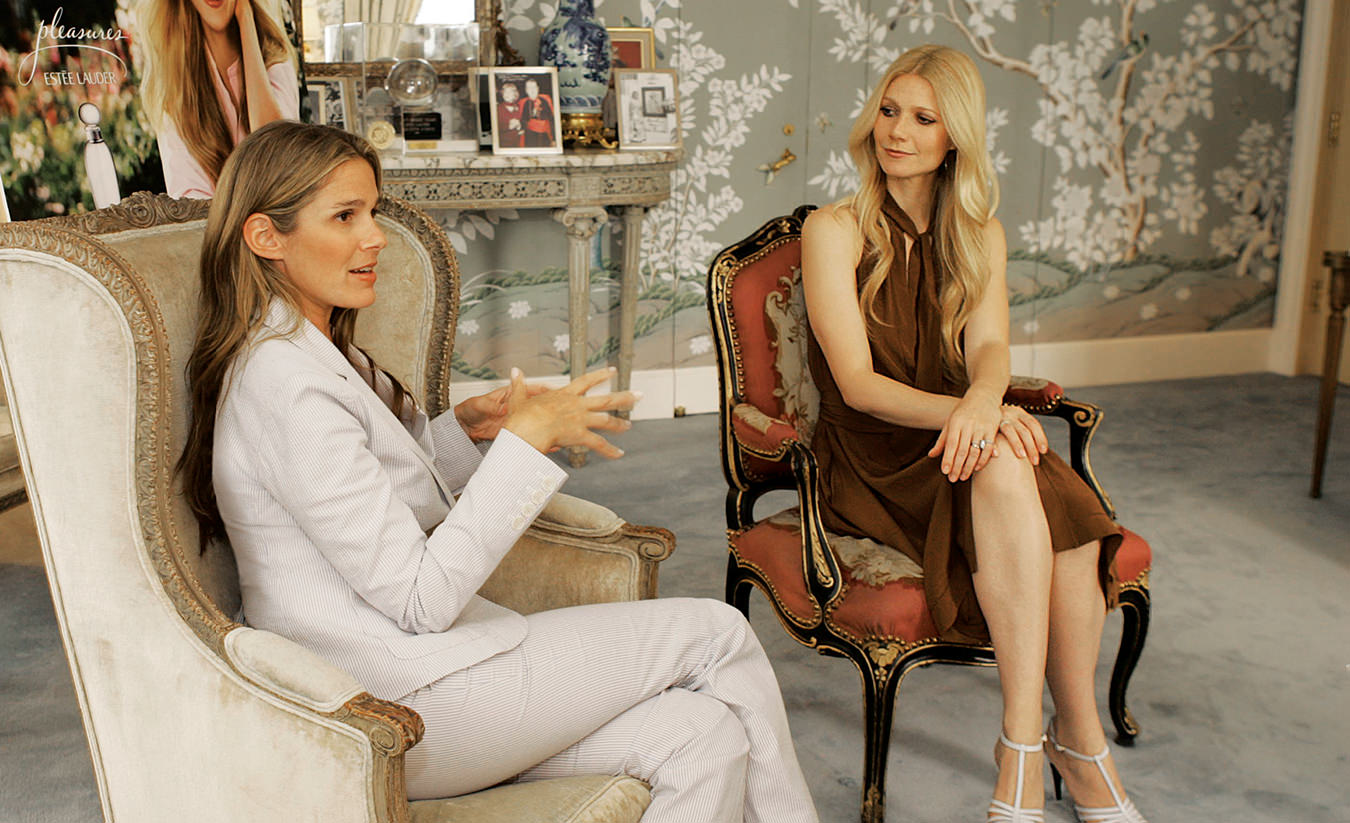
Aerin Lauder and actress Gwyneth Paltrow, Estée Lauder’s newest face.
Gwyneth Paltrow is the latest addition. “She is the ideal Estée Lauder woman. She’s always been on the right path, and has the same values we do,” Aerin says. “She’s a leader in her field, Academy Award winner, the modern Grace Kelly. We want the best of the best.” And they stop at nothing else. Nor do they stop at the borders of North America.
In the autobiography, Estée: A Success Story, Estée Lauder says: “The art of inventing beauty transcends class, intellect, age, profession, geography—virtually every culture and economic barrier.” That art is something Aerin has mastered, and she speaks to that end as she mentions the kinds of images that proliferate their brand throughout the world: “Here she’s on a beach, but it could be a beach anywhere in the world. We don’t think of beauty in terms of European, or North American, rather we look at it from a global perspective.”
Branding exceeds the walls of Estée Lauder and into Aerin’s public life. She is a visual representation of the brand that she creates, and it pervades every aspect of her life. And she enjoys being a part of the scene in New York City, just as her grandmother did. She hosts events and is a social representative for the company. If you ask her to describe her entertaining style, it is very closely related to her approach to the company. “It’s that focus on elegance with a twist. Maybe it’s more casual, or that I have a long table. I love long tables in the summer,” she reflects. “My grandmother would never do that. She would have four tables of six or something.” Funny how the way you entertain and lead your social life can inform the direction of your work. Many take great pride in separating the two, but Aerin Lauder is intent on making sure that blurring of the lines is exactly what happens. Her personal grace and style is very important to the company’s vision, and it’s no mistake that it is an unavoidable fact of her life. It is her name, her family, on every piece of product.
In the past few years, Lauder has taken an interest in making old things new again. Some of the brand’s most popular mainstays have been reinvented with a modern perspective. Re-Nutriv, the company’s longest standing and most popular anti-aging skin care line, was re-launched. Two perfumes, White Linen and Youth Dew, are also being reinvented with new spins. This summer, Gwyneth Paltrow will be the face of White Linen, but it is the mind behind the Youth Dew re-working that has spurred the biggest buzz.
Aerin Lauder is a visual representation of the brand that she creates and it pervades every aspect of her life.
Tom Ford, legendary fashion phenomenon notorious for his sexually explicit sensibilities, has joined forces with Estée Lauder to reinvent Youth Dew and also put his hands in make-up with a new Spring make-up line called Azurée. It was Aerin who brought him in. Ford is a legend for leading Yves Saint Laurent and for saving the Gucci fashion house from tumbling, but also for his provocative taste. The models for Youth Dew Amber Nude are noticeably more scantily clad and provocative than what the brand usually produces. Famed photographer Mario Testino was key in creating the edgier look. But is this partnership a strong insight into the future of the brand? Lauder shakes her head. “We are who we are. But we will continue to surprise the consumer.” And with a glint in her eye, it seems there are more surprises tucked up in the sleeve of her tunic.
Alliances will continue to be a part of the Estée Lauder plan and brand. “They’ve been very successful for us.” Will the fashion world again be an integral part of these alliances? When quizzed on who she’d like to work with in the future, Lauder looks to the best of the fashion world for inspiration. “I love what Pheobe Philo did with Chloé. And Nicolas Ghesquière of Balenciaga. I think what he’s doing is really beautiful.”
Both of her choices reveal an admirable balancing act that Aerin maintains with Estée Lauder. On the one side there is a bold and driven force that won’t compromise. Nicolas Ghesquière finds that ambition and influence in Cristobal Balenciaga, the company’s founder and namesake. Joining the company in 1995, he has taken the designs back to the archives of abstract, organic and over-decorated garments of the company’s first collections. Ghesquière said recently that Balenciaga “waited for other people to understand what he was doing, instead of doing what they wanted. He never compromised”. Estée Lauder’s driven and uncompromising confidence is reminiscent of this. Both Ghesquière and Aerin Lauder create that modern twist on heritage. Pheobe Philo, in contrast, was taught and moulded, just as Aerin was, within a company, Chloé, that Stella McCartney propelled back into the mainstream and to the forefront as a revered fashion house. Philo was able to take hold of the reins and find an even more marketable range of designs. It is a well-taught femininity that Chloé stands for, one that Estée Lauder subscribes to as well. Respecting the heritage of a brand that has come this far, and giving it a modern femininity, is key to how Estée Lauder perseveres and continues to be innovative.
“You’re only as good as the people around you,” Aerin says emphatically. And perhaps the family and community that has surrounded her throughout her life and career is testament to that. But as she sits behind a rustic, mirror panelled desk, smoothing her hair behind her ears, it’s clear that no matter how much that reflection is part of her heritage, it reveals a woman barrelling toward the future and taking Estée Lauder into newfound, sustainable success.

